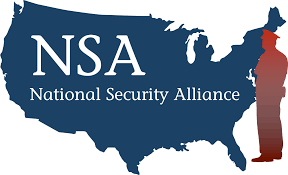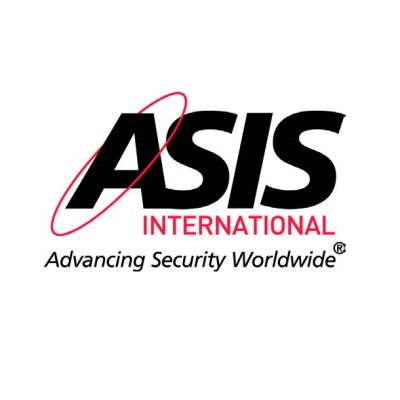
Advice for security guards on the rise
Tips, Tools & Tactics October 2025 Vol 4
Guarding today bears little resemblance to its traditional roots. Technology is shaping how security is managed and delivered, and new guards entering the field must be familiar with emerging tools such as AI, biometrics, wearables, digital evidence, robots, drones, and more.
While not all clients use these technologies, many are investing in them to enhance threat detection, improve safety, reduce costs, and mitigate risk. For guards, it means additional training is required —not just to ensure familiarity with these tools, but also to enhance their value to potential clients. Tech acumen is fast becoming a coveted skill, and getting up to speed with the latest tech security trends is the best way to secure your future.
This month, we’ll look at some of the top tech trends shaping today’s guarding economy.
AI’s Role in Modern Physical Security
We’re seeing AI entering the security canvas in several different ways: video analytics, alarm-triage, and predictive patrol routing are changing guard workflows and providing unique assistance where human judgment is required.
Not all security posts are high-risk, but most guards have at least one or two stories about unexpected or challenging situations that would have been less risky had predictive technology been available to support them.
AI threat detection, in particular, has a few unique applications. Some systems can detect weapons while others can analyze crowd behavior for potential trouble. Rather than replacing a guard’s presence, these tools provide an additional set of eyes, helping to make patrolling large or crowded areas safer and more efficient. Read more in this article, which discusses how AI surveillance enhances guard work and how it integrates into modern guarding workflows.
Welcome to a New Age in Digital Evidence Management
Body cameras are polarizing among law enforcement and security personnel. Some jurisdictions report significant reductions in use-of-force incidents, while others see no difference. However, most will agree that they provide the officer with greater confidence as they can more easily prove accountability for their actions. Body camera footage is also helpful for reporting, especially in highly charged scenarios where small but critical details can be overlooked in the heat of the moment.
The benefits of body cams are many, especially to the client. Retail establishments report reduced incidence of theft due to the deterrence factor, and a guard’s reports will never be in question.
Body cam footage can also be used as an educational tool, much like a sports team does a game review. The footage can demonstrate what went wrong (or right) in an exchange, helping guards to hone and improve their response.
Feel like nerding out on body cams? Check out this fascinating and well-researched article on the Past, Present, and Future of Police Body Cameras.
How Drones and Defense Tech Are Changing the Guarding Game
Drones and counter-drone technology are evolving at a rapid pace. Many firms and clients utilize drones to patrol remote or inaccessible areas. Militarily-advanced models are further equipped with threat detection, counter-drone technology, and sensors that can operate autonomously to defend a client’s airspace.
The advantages are clear: enhanced defense of challenging locales, improved efficiency, and significantly reduced costs, as well as quick response and visible deterrence. However, they are also vulnerable to hacking and could be compromised. Drones raise privacy concerns for individuals and organizations. Plus, they are highly dependent on the weather.
Counter-drone capability and policy are hot topics. Frameworks are still emerging, and new laws may significantly alter the landscape. Some of the trends we’re seeing include remote ID, although the technology still has significant flaws to be addressed.
While the situation develops, there are likely to be more advances on the way. Guards interested in tech-driven surveillance would do well to train on drone operation, as they will almost certainly be part of our future.
Recognized and Regulated: The New Face of Security Tech
Facial recognition is often deployed for access control in secure buildings, data centers, and other highly restricted areas. It can flag suspicious individuals, monitor crowds for potential threats, and assist security guards in locating missing children in public places.
But along with the benefits of facial recognition come significant privacy and security concerns. People want to know how their data is being used, processed, and held. Without adequate guardrails in place, a person’s most identifiable biodata is at risk.
Plus, there is always a risk of error. Inaccuracies, bias, and misidentification still happen, often involving people of color and women. An inaccurate assessment taken as gospel can lead to a loss of freedom, injury, or, at the very least, a highly stressful interaction.
To make facial recognition work in security environments, guards need clear policies on its use and limitations. The U.S Commission on Civil Rights recently released a report outlining the civil use of facial recognition technology in Federal environments. An interesting read, the report calls for rigorous testing to ensure disparities are addressed across demographics. Read the report here.
Smart Patrols, Stronger Teams: The Power of Wearables and Mobility
From body cams and software that summarizes the footage to wearable panic alarms and devices that put the entire security platform in the palms of their hands, today’s security professionals are connected in every way that matters.
When a guard can connect remotely to the command center and all connected devices, they receive alerts immediately – often accompanied by instructions and significant details that help them respond more efficiently. Imagine being dispatched to an incident, having been briefed on all the relevant data before you arrive on scene. Instead of taking the time to evaluate and form a response, you can leap into action immediately as all pertinent information is already in hand.
Mobile security apps have the potential to connect teams across extensive facilities. They also enable remote monitoring, which can reduce the number of guards required while making response more accurate, efficient, and compliant.
In a recruiting scenario, guards who are comfortable with using technology will be a more desirable hire. Taking the time to familiarize yourself with today’s technology, whether through coursework or hands-on training, will pay off in better job postings and possibly higher pay.
To learn more about tech in the field and how it will transform guarding, browse the Defencify blog today.






